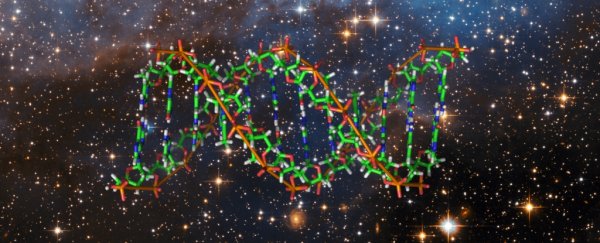Humans may not be able to burp properly in space, but we can now edit a genome. For the first time, astronauts aboard the International Space Station (ISS) have used CRISPR-Cas9 to edit the DNA of brewer's yeast.
The goal wasn't to create super space yeast. The astronauts were studying how DNA repair mechanisms work in space, so they snipped through strands of the fungus's genetic code in a number of places to mimic radiation damage.
"The damage actually happens on the space station and the analysis also happens in space," said Emily Gleason of miniPCR Bio, the company that designed the DNA lab aboard the ISS. "We want to understand if DNA repair methods are different in space than on Earth."
Space is actually a pretty hazardous place, and radiation is one of the biggest concerns.
Although at its average altitude of 408 kilometres (253 miles) the ISS is still protected by Earth's magnetic field, in six months onboard, on average the astronauts are subjected to around 30 times the radiation a human receives in a year on Earth.
It's well documented that space radiation puts ISS astronauts at risk for radiation sickness, as well as raising long-term risk for cancer, degenerative diseases and central nervous system problems.
For a mission to Mars, which would be a lot longer than six months spent outside Earth's protective bubble, the radiation hazard increases. So figuring out how DNA repairs itself from radiation damage could be incredibly useful.
Hence the ISS crew's experiment: they employed the power of CRISPR-Cas9, the hot gene-editing technology that lets scientists slice into DNA code with the equivalent of a molecular scalpel. (You can read more about CRISPR here.)
The idea for this experiment was first proposed by students David Li, Aarthi Vijayakumar, Rebecca Li and Michelle Sung as part of NASA's Genes in Space contest. The goal of their experimental design was to introduce breaks into both DNA strands of the yeast Saccharomyces cerevisiae, to imitate potential radiation damage to the organism.
Aboard the space station, NASA astronauts Christina Koch and Nick Hague carried out the experiment, successfully editing the genome. Then, the yeast was left to repair the damage done to its DNA.
Comparing the molecular structure of the yeast's DNA before and after this damage-repair cycle would allow scientists to observe if there were any changes in the molecular structure, indicating whether the DNA repair introduced any genetic errors.
To run these comparisons, the repaired DNA was copied multiple times using a process called polymerase chain reaction (PCR) in the miniPCR thermal cycler machine. Then, a second device called the MinION was used to sequence the DNA.
The results are yet to be reported in a published paper, but for now it joins the exciting list of genetics tools that can be used in space, including gene sequencing, which was first performed in 2016, PCR, also in 2016, and RNA sequencing, a milestone reached last year.
"One thing the investigation will tell us is yes, we can do these things in space," Gleason said.
"Ultimately, we can use this knowledge to help protect astronauts from DNA damage caused by cosmic radiation on long voyages and to enable genome editing in space."
